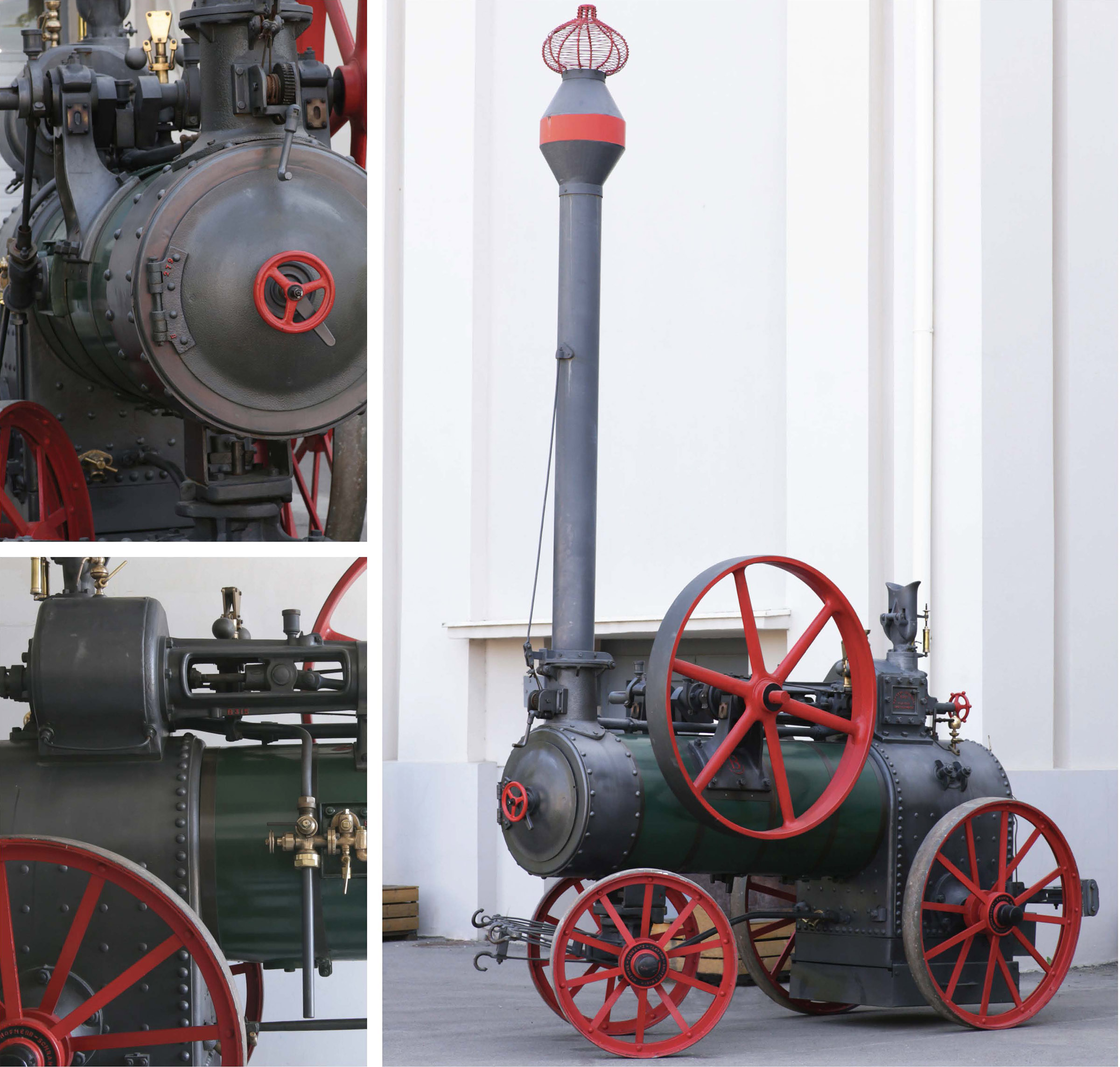Steam-powered
Steam engine - Locomobile
Place and time of production: Austria-Hungary, 1914
Dimensions (cm): 360 . 156 . 280
Inventory number: Т: 13.1
Invention of a steam engine signified the start of a new industrial age. Mobile steam engines — Locomobiles, were used to power mills, sawmills, threshers, water pumps and various other machines. They were manufactured in different sizes and with various power. Between 1891 and 1905, around 170 locomobiles were imported to Serbia. In early 20th century, almost half of the Serbian industry was powered by steam engines and their number grew continuously.
Even though in late 19th century in the United States, the development of internal combustion engines began in parallel with the exploitation of petrol, the mass use of steam engine continued for another 50 years. Today, the possibilities of using steam power are once again being considered, taking into account the global pollution issue, which was caused by the excessive use of fossil fuels.
Locomobile Hofherr-Schrantz-Clayton has five horse powers and weighs 2,800 kg. Unlike self-propelled locomobiles, it was ox-driven. When it was moving, a tall chimney would lower into a horizontal position using a special mechanism. Different fuels, hay, branches, corn husks or wood were used to fire the boiler and the operating pressure was between five and ten atmospheres. Upon the initiative and under control of the experts from the Museum of Science and Technology, it was restored in 1994 at the Sartid factory.



